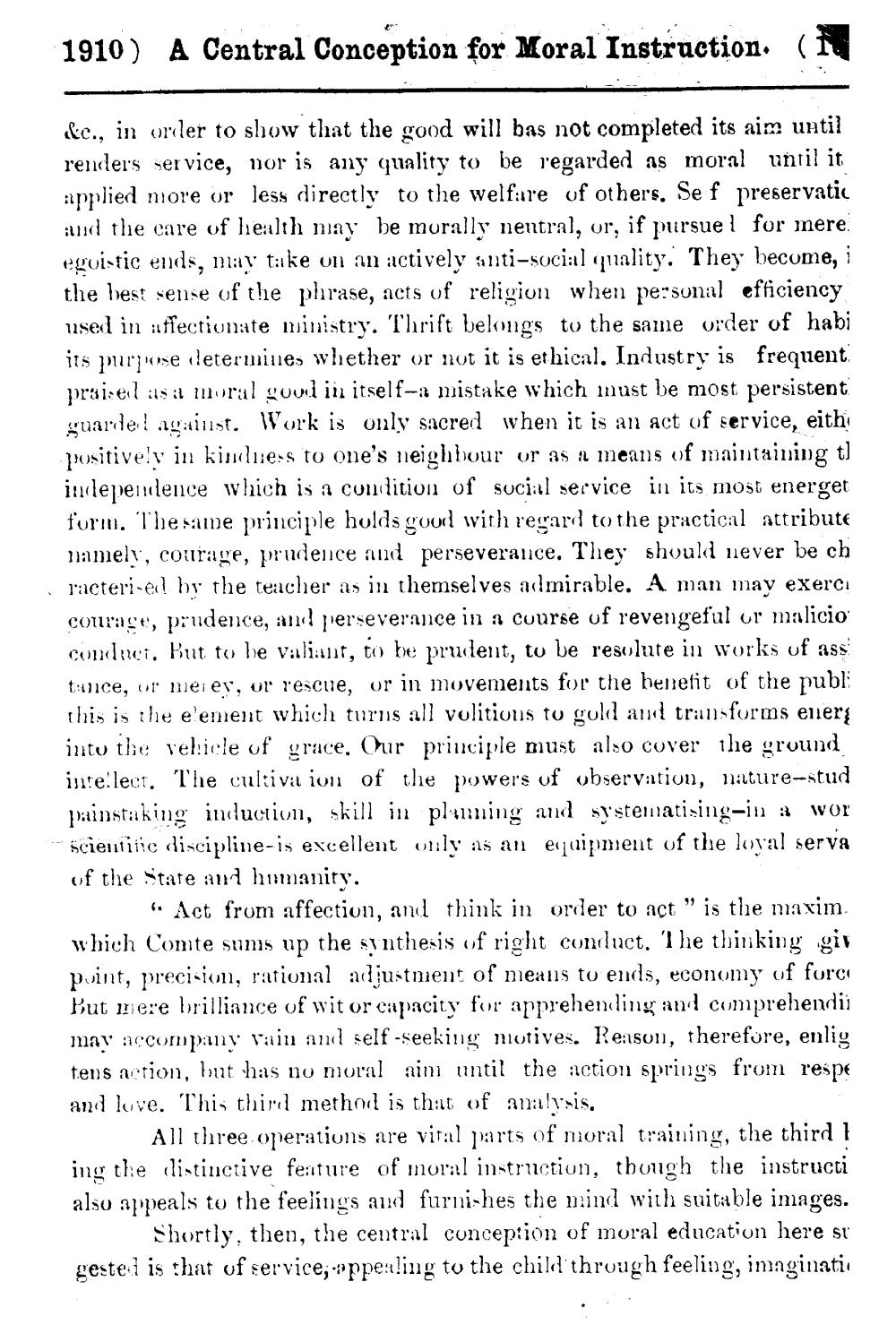________________
1910) A Central Conception for Moral Instruction. (N
abc., in oriler to show that the good will bas not completed its aim until renders service, vor is any quality to be regarded as moral until it applied more or less directly to the welfare of others. Se f preservatic and the care of health may be murally nentral, or, if pursuel for mere. egoistic ends, may take on an actively anti-social quality. They become, i the best sense of the phrase, acts of religion when personal efficiency used in affectionate ministry. Thrift belongs to the same order of habi its purpose iletermine whether or not it is ethical. Industry is frequent prai:el is it moral goud in itself-a mistake which must be most persistent yuarded against. Work is only sacred when it is an act of service, eith positively in kimuess to one's neighbour or as a means of maintaining t] independence which is a condition of social service in its most energet form. The same principle holds good with regard to the practical attribute namely, courage, prudence and perseverance. They should never be ch racteri-ed by the teacher as in themselves aclmirable. A man may exerci courage, prudence, and perseverance in a course of revengeful or malicio concerci. But to be valiant, to be pruulent, to be resolute in works of assi tance, or meier, or rescue, or in movements for the benefit of the publi this is the element which turus all volitious to gold and transforms enerį intu the vehicle of grace. Our principle must also cover the ground intellect. The cultiva ion of the powers of observation, nature-stud painstaking induction, skill in planning and systematising-in it wor - scientific discipline-is excellent only is an equipment of the loyal serva of the State and humanity.
" Act from affection, and think in order to act” is the maxim. which Comte sums up the synthesis of right conduct. The thinking giv puint, precision, rational adjustnient of means to ends, economy of forcı But mere brilliance of wit or capacity for apprehending and comprehendii may accompany rain and self-seeking motives. Reason, therefore, enlig tens action, but has no moral aim until the action springs from respe and luve. This third method is that of analysis.
All three operations are vital parts of moral training, the third ! ing the listinctive feature of moral instruction, though the instructi also appeals to the feelings and furnishes the mind with suitable images.
Shortly, then, the central concep:ion of moral education here su gestel is that of service; - ppealing to the child through feeling, imaginati,




